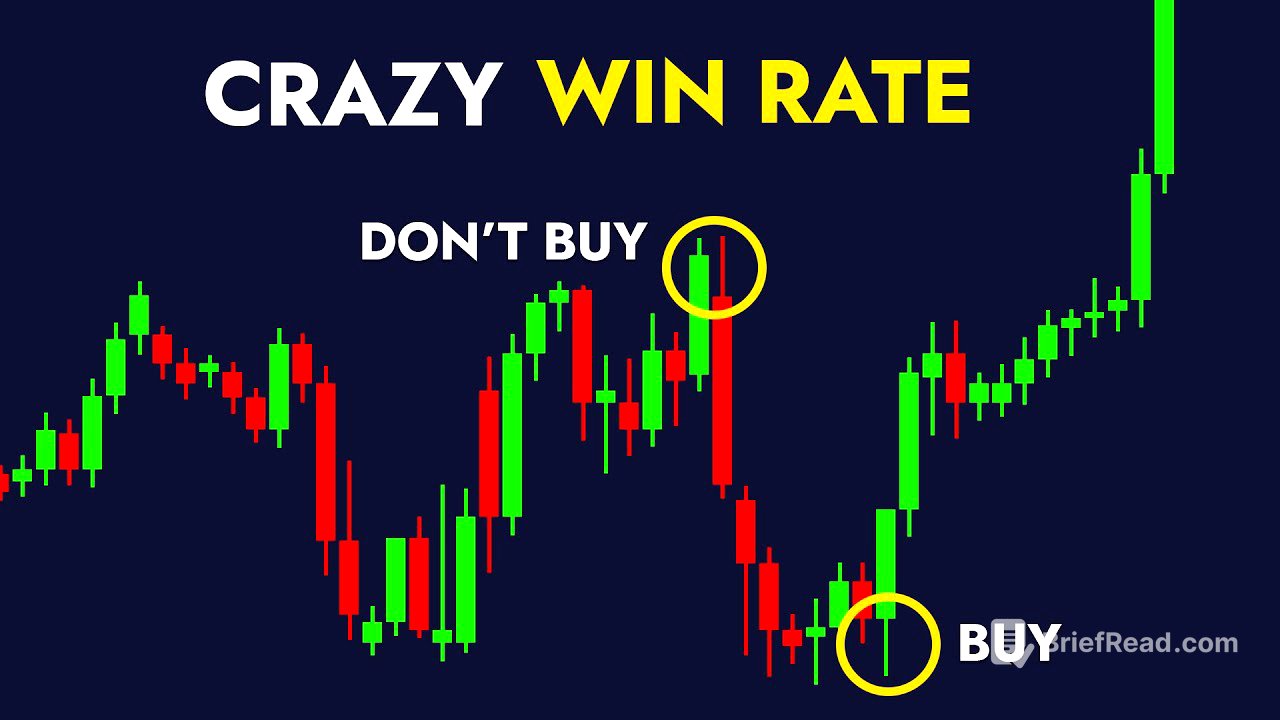TLDR;
This video introduces the "Box Strategy," a trading method based on identifying key price levels from the previous day's chart. It emphasizes simplicity and consistency, claiming it can be easily learned and applied across various markets. The strategy involves drawing a box using the previous day's high and low, then observing price action at these boundaries for potential trades, while avoiding trading in the middle of the box.
- The strategy focuses on identifying key price levels from the previous day's chart.
- It emphasizes simplicity and consistency.
- It involves drawing a box using the previous day's high and low.
- It advises observing price action at these boundaries for potential trades.
- It warns against trading in the middle of the box.
Introduction to the Box Strategy [0:00]
The presenter introduces the "Box Strategy," a simple yet powerful trading method that has generated consistent profits. The strategy is easy to learn and can be applied to various markets. The presenter shares their personal experience of struggling with complex trading systems before discovering this strategy, which led to consistent winning trades. The key is simplicity, focusing on a three-step strategy that anyone can master.
Drawing the Box: Identifying Key Price Levels [2:35]
The first step in the Box Strategy is to identify the previous day's high and low on the chart. A rectangle, or "power rectangle," is then created by linking these two critical price levels. These upper and lower boundaries act as a navigation system for the trading session ahead. The price tends to gravitate towards these boundaries, either the previous day's peak (upper fence) or the previous day's bottom (lower fence).
The Crucial Rules of the Box Strategy [4:05]
The presenter outlines three crucial rules for the Box Strategy. First, never go long at the upper boundary, as this represents the level where buying enthusiasm died out and where heavy selling pressure is likely to occur. Second, avoid shorting at the lower boundary, which represents the area with the biggest amount of buyers. Third, avoid the center zone of the box at all costs, especially during the first 10 to 20 minutes after the market opens, as this area is characterized by chaos and random movement.
Step Two: Confirmation Signal and Live Trade Examples [8:16]
The presenter transitions to step two, focusing on the confirmation signal for entry with live trade examples. The first step is to box in the previous day's high and low. The presenter uses a specific currency pair and timeframe for demonstration, but emphasizes that any timeframe can be used. The presenter identifies yesterday's high and low parameters, creating a tactical framework.
Live Trade Example 1: Shorting at the Upper Boundary [8:59]
The presenter analyzes a live trade example, focusing on the upper boundary of the box. The presenter observes the price action as the market opens and heads towards the upper part of the box, looking for a short entry. The presenter waits for a specific candlestick formation, including a green candlestick followed by a red candlestick, especially a dogee hammer candlestick, to confirm that sellers are stepping in. The entry occurs as soon as the price starts going below the low of the red candlestick, with the stop loss placed slightly above the high of the candlestick.
Live Trade Example 2: Shorting After a Breakout [12:36]
The presenter analyzes a second live trade example, focusing on a scenario where the market breaks out of the low of the box. The presenter waits to see if the low of the previous day gets tested again, anticipating that sellers will take control. The presenter observes the price action and waits for a red candlestick to confirm that sellers are stepping in around the previous low, which now acts as a resistance area. The entry occurs as soon as the price takes out the low of the first red candlestick, with the stop loss placed slightly above the high.
Summary of the Box Strategy [15:50]
The presenter summarizes the Box Strategy, emphasizing the key steps: draw the box using the previous day's high and low, wait for tests of the top or bottom of the box, follow the rules (never buy at the top, never sell at the bottom, never trade in the middle), wait for confirmation with specific candlestick formations like dogee hammer patterns, enter with precision when price action confirms institutional involvement, and manage the trade like a pro by moving stops to break even, trailing profits, and respecting risk-reward ratios.









